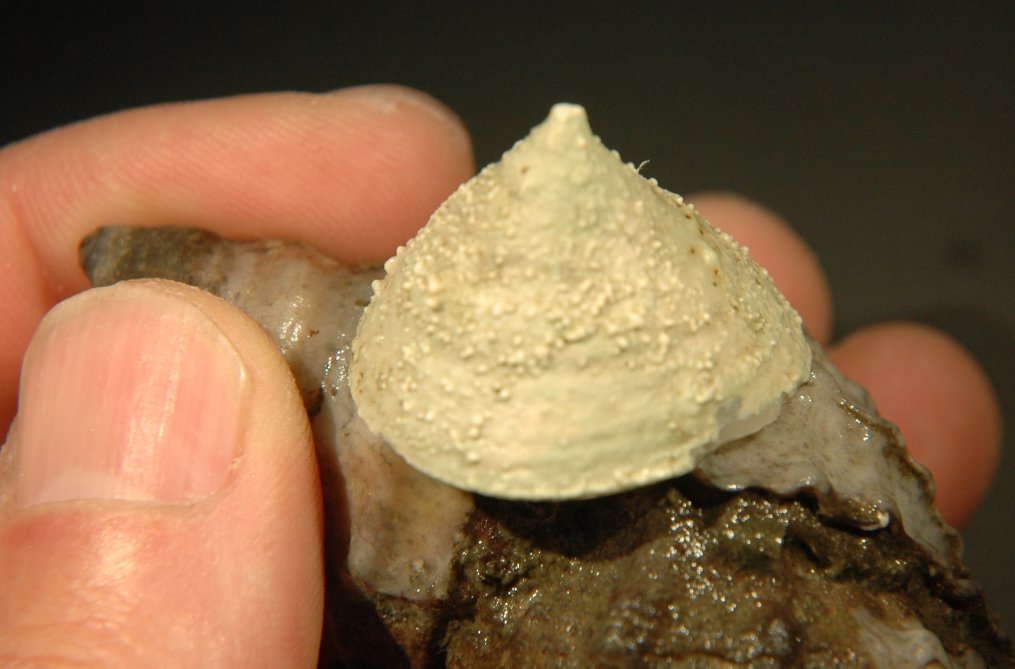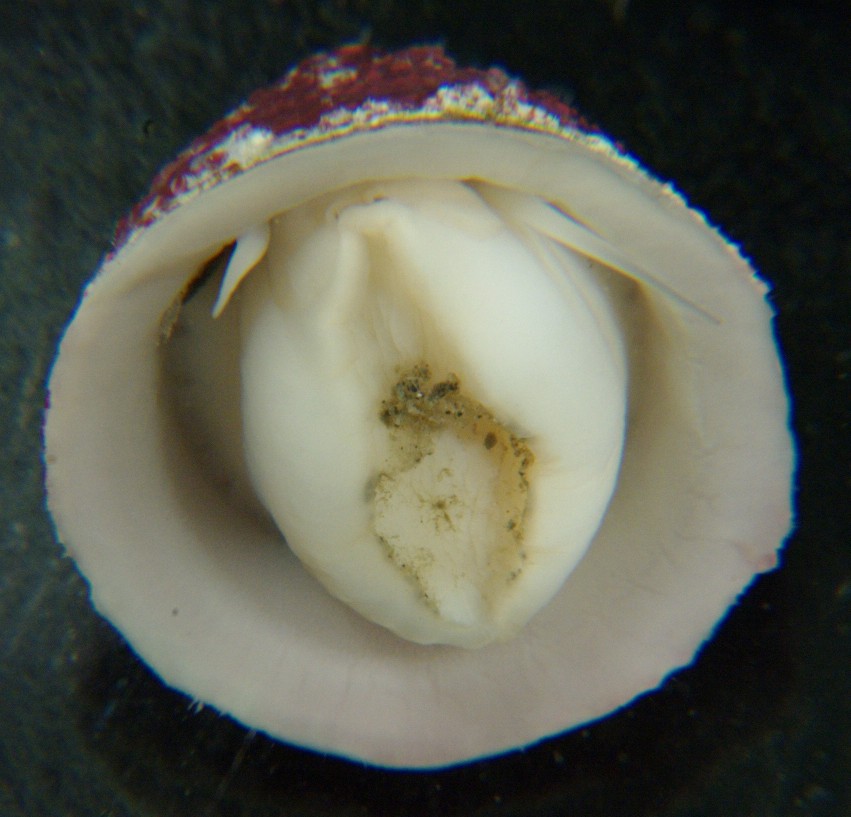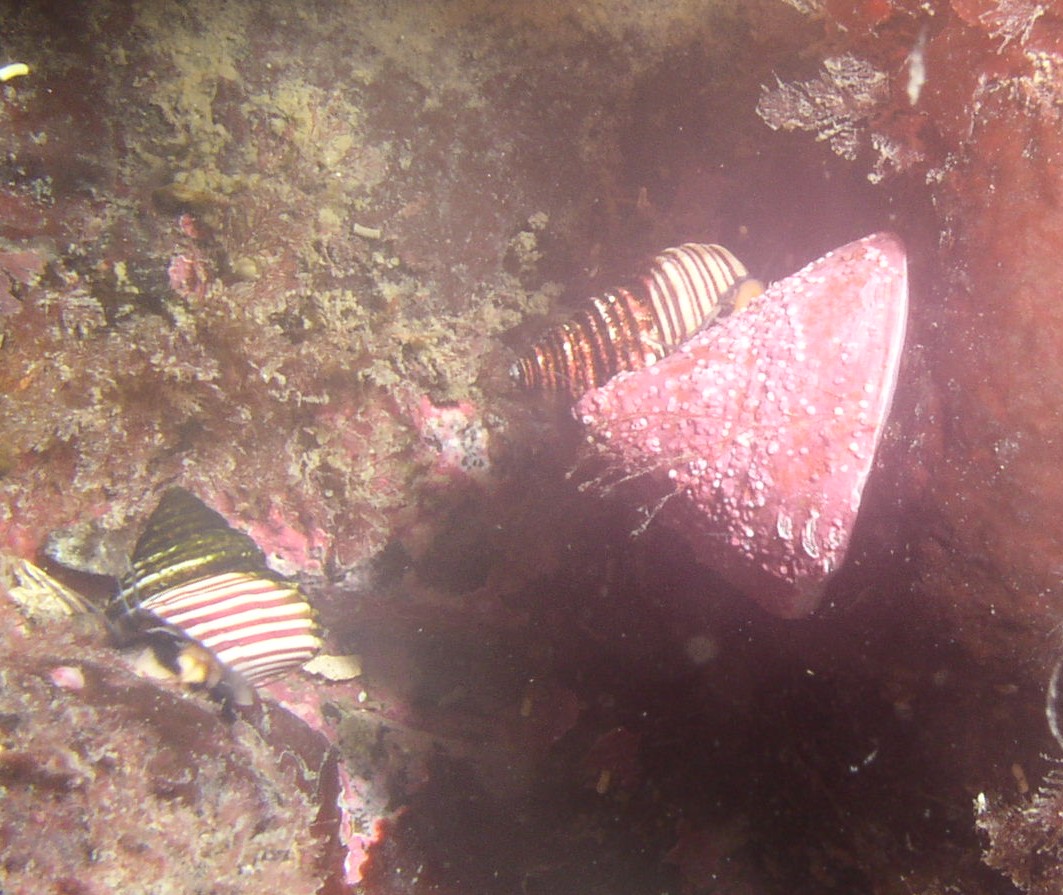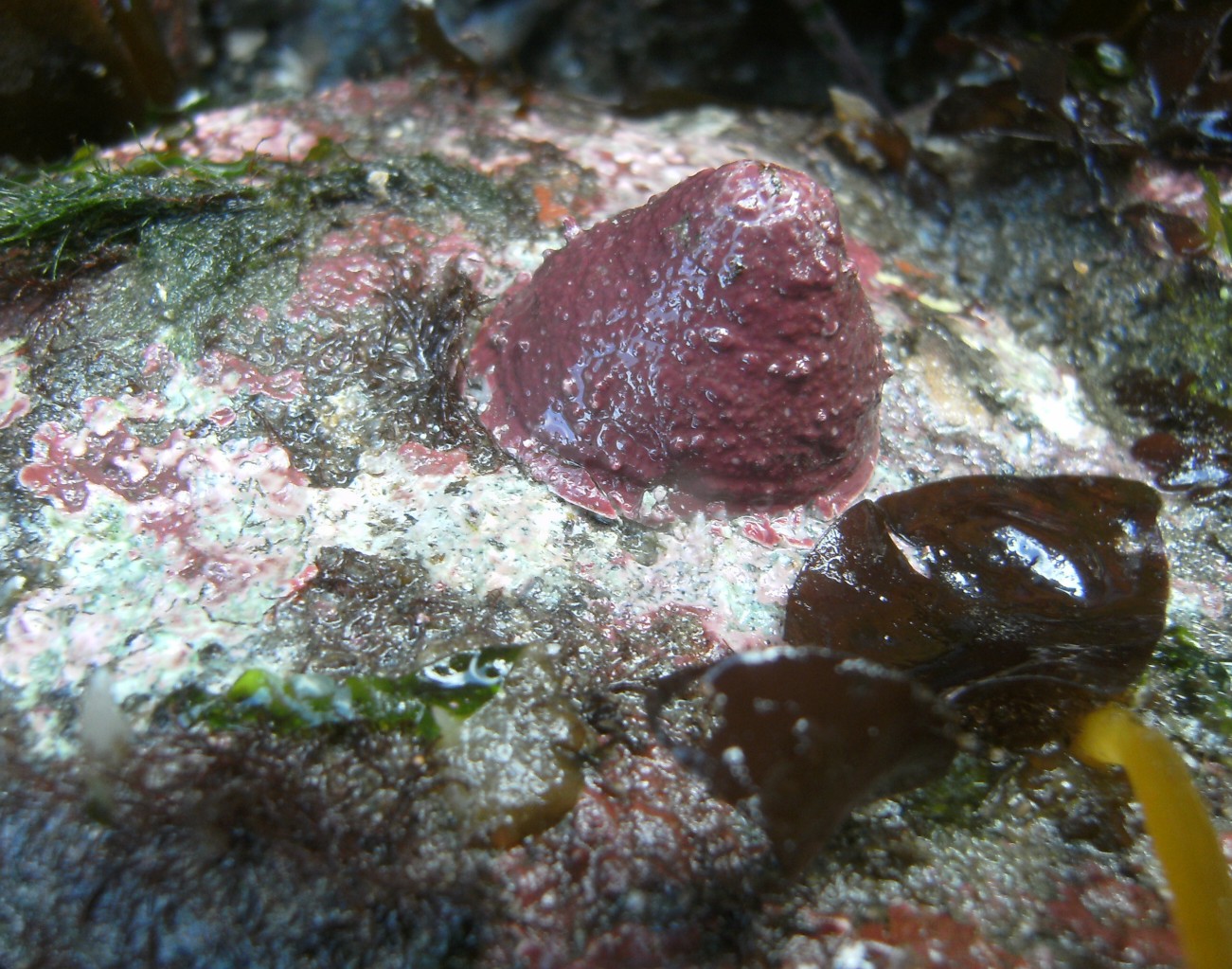Acmaea mitraWhite-Cap Limpet, Dunce-cap limpet, Bishop's cap limpet, Chinese hat limpet |
|
| Synonyms: none |  |
| Phylum
Mollusca
Class Gastropoda Subclass Prosobranchia Order Patellogastropoda Family Acmaeidae |
|
| Acmaea mitra shell found at Rosario. The true shell color (white) shows through, and the shell of this individual is partly eroded by a burrowing species. | |
| Photo by: Ryan Lunsford 2002 | |
How to Distinguish from
Similar Species: Acmaea
mitra is the only all white limpet, and is much taller and
conical
like a miter or short dunce's cap than are other limpets.
Geographical Range: Aleutian Islands, Alaska to Baja California.
Depth Range: Low intertidal and mostly shallow subtidal
Habitat: A. mitra can be found whereever red coralline algae is present.
Biology/Natural
History: Acmaea
mitra is known by its tall shell, which can reach a height of
30 mm
and a length of 35 mm. The scientific name means "pointed
cap".
This species eats coralline aglae using its radula. The teeth
of
its radula are unique amoung marine invertebrates, as they are capped
with
goethite, and also with silica (opal). Goethite is an iron
compound
that forms a hard crystalline cap around the teeth. A.
mitra
is also fairly unique amoung limpets as it does not appear to have any
defense response system to predators. Predators include the
seastar
Orthasterias
koehleri and birds such as black oystercatchers and
white-winged scoters.
| Return to: | |||
| Main Page | Alphabetic Index | Systematic Index | Glossary |
References:
Dichotomous Keys:
Flora
and Fairbanks, 1966
Kozloff, 1987, 1996
Smith and Carlton, 1975
General References:
Brusca
and Brusca, 1978
Harbo,
1997
Harbo,
1999
Kozloff,
1993
McConnaughey
and McConnaughey, 1986
Morris
et al., 1980.
Niesen,
1994
Niesen,
1997
O'Clair
and O'Clair, 1998
Ricketts
et al., 1985
Scientific Articles:
General Notes and Observations: Locations, abundances, unusual behaviors, etc.:

This individual is crawling on a Nucella
lamellosa shell. It is covered with
coralline algae, which
is usually pink. The white color suggests that the coralline
algae
is dead on this individual.
Photo by Dave Cowles, July 2005

The head, tentacles, and foot of this species are white. Photo by Dave Cowles, July 2010

An underwater photo of Acmaea mitra by Kirt
Onthank, July 2007.
The limpet is encrusted with algae.
The two snails in the background are Calliostoma
ligatum.

Another individual, photographed in the intertidal. The
limpet
grazes on coralline algae, but some coralline algae also often overgrow
the limpet's shell. I do not know whether the algal
overgrowth comes
due to the fact that the limpet often rests within the algal colony or
whether the algae spores or gametes settle anew on the shell.
I rarely
see anything else but coralline algae growing on the shell, so that may
imply that the overgrowth comes from resting within the algal
colony.
Note that many of the coralline algae encrusting the rock already seem
to have been grazed in this photo. Photo by Dave Cowles, July
2010.
Authors and Editors of Page:
Ryan Lunsford (2002)
Editors: Dave Cowles 8-2002, 2005
Hans Helmstetler 12-2002